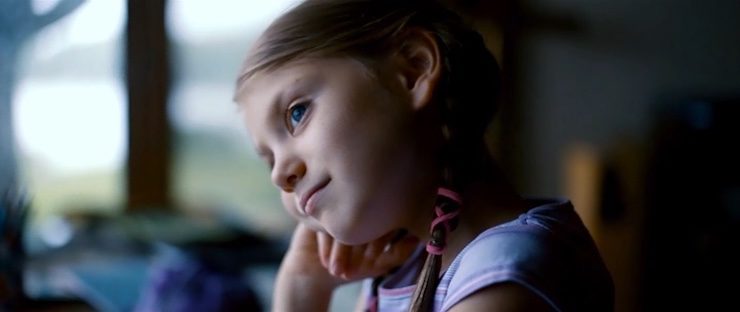I’ve been talking a lot about books in this column lately. Pretty much exclusively, in fact. This week I want to make a slight change to our programme—since recently I watched Arrival and Moana back to back, and discovered that they share one surprising trait.
On the surface, neither Arrival nor Moana share many features in common. Arrival is a live-action science fiction film based on a Ted Chiang short story, designed for adults and talking about intimate human themes—loss, communication, strangeness, hope—and big science fiction ones—time, the alien, understanding and language. Moana is an animated Disney fantasia that draws its inspiration from Polynesian island myth and legend, fun for all the family, and its themes are—unusually for many of the Disney films I’ve seen—focused firmly both on coming-of-age and on the preservation or recreation of skills and knowledge from the past.
But both Arrival and Moana share one particular commonality. Family relationships—and the emotional resonance of those relationships—between women of different generations have a deep influence on each film’s main character.
Spoilers ahead.
In Arrival, we learn of Dr. Louise Banks’s daughter through scenes that show Banks and her daughter together. The daughter dies before reaching adulthood, of a disease linked to genetics, and the grief at this loss, as well as her joy in her daughter, is an undercurrent in all of Banks’s interactions with the world. The viewer eventually learns that Banks is not experiencing time in a linear fashion: that, in the viewer’s frame of reference, seeing the events of the film as incidents to be fitted into a linear progression, Banks hasn’t yet married the man who will be her daughter’s father, before becoming estranged from them both.
A mother’s loss of her child is not usually a core emotional point in a science fiction film. The presence of this grief adds depth to Arrival: it indicates the film’s willingness to, and interest in, engaging with the inner life of a woman who is also a scientist, and—in a film which otherwise isolates its protagonist from other women—in showing her as a woman with a life and connections outside of her work.

Mothers and daughters are slightly more common in speculative fiction than grandmothers and granddaughters. But that’s what Moana gives us, in the person of the titular Moana and her unconventional grandmother, Gramma Tala. We’re first introduced to Gramma Tala as she is telling a story to a group of toddlers (including Moana) about the hero Maui and his ill-advised theft of the heart of the goddess Te Fiti. Later, Gramma Tala is shown dancing on the seashore, a practice that no one else undertakes—except, briefly, Moana. She has a strong emotional bond with Moana, and sympathises with Moana about her desire to set out on the sea. When a threat arises to the island’s food supply, she leads Moana to a place where the history of their people lies hidden, to support Moana in making choices about her future. And her spirit—in the form of a manta-ray—will guide and encourage Moana at key points during the course of the narrative.
The intergenerational connections between these women have a significant effect on the emotional arc of the narratives of each of these films. Arrival is a film about communication, but also about strangeness and grief; Moana is a film about coming of age, but also about respect for the past. There are few enough films these days that show intergenerational influence between women, the way in which (for example) a granddaughter might find an example to emulate, or emotional support, in her grandmother; or in which a mother might carry the memory of her daughter with her, and might choose to love her daughter even in the foreknowledge of grievous loss. It strikes me as unusual and as noteworthy that we should see two such dissimilar films foreground so strongly connection between women across generations within a family. To acknowledge that women’s emotional lives do not revolve around men, and also acknowledge a strong family component, without reducing the female characters to people who have no emotional lives outside their family concerns.
These films are also really good speculative fiction. So I recommend them.
Especially Moana.
Liz Bourke is a cranky queer person who reads books. She holds a Ph.D in Classics from Trinity College, Dublin. Find her at her blog, where she’s been known to talk about even more books thanks to her Patreon supporters. Or find her at her Twitter. She supports the work of the Irish Refugee Council and the Abortion Rights Campaign.










